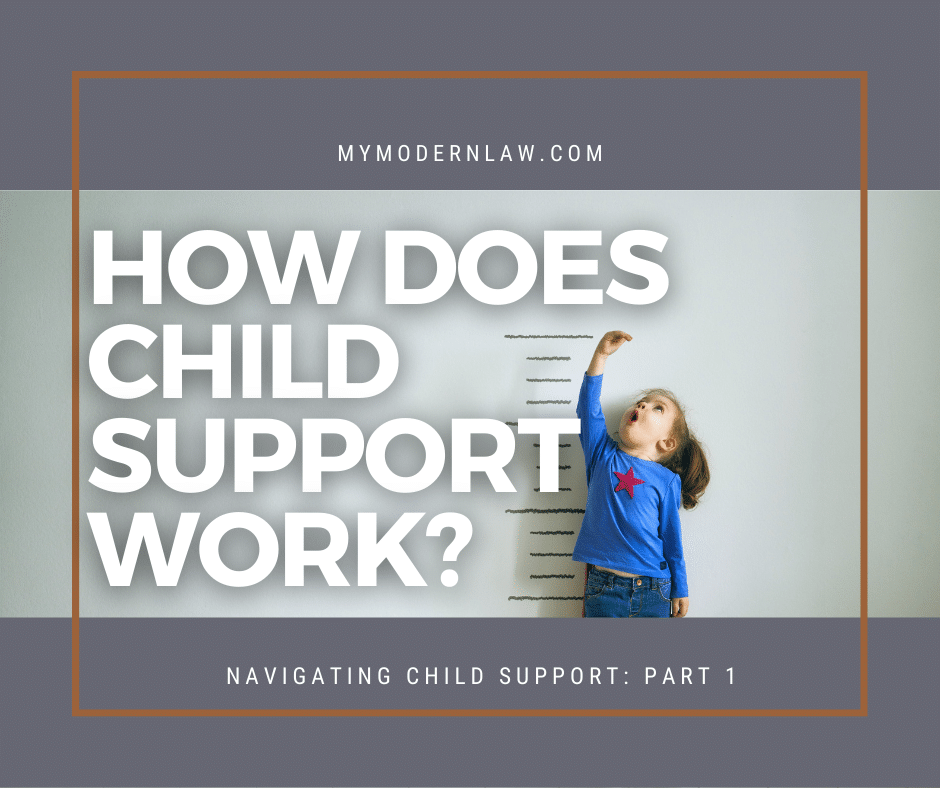Going through a divorce is difficult, even when it’s just you and your spouse. When there are children involved, things can become more complicated and more frightening. Good parents always want what’s best for their kids, and they want to make sure those kids are taken care of properly. This includes mental, emotional, and physical health, as well as child support arrangements to make sure the children have what they need.
It is important to understand how the child support system works in Arizona. The more you know about the process of divorce, custody, and support, the better off you will be. In this two-part post, we will be delving into
child support to give you an idea of how it works, why it works the way it does, and to answer some of the common questions that tend to be asked.
How Does Child Support Work?
Child support will affect every case where there is a divorced couple or unmarried parents, as well as adopted children. The courts in Arizona want to make sure that the children have the financial support that is required to raise them.
Calculating the Child Support
Child support is determined by a calculator in Arizona, just as it is in other states. The calculator will help to make the process of defining the amount of child support fair for both of the parents.
The calculator has a range of inputs that need to be added. This includes the income of both of the parents, the age of the children, parenting time, child care costs, and the costs of health insurance. Those who are uncertain can always talk with an attorney to get a better idea of how much they will receive or have to pay in child support.
Why Do Some People Get More Money?
The
standard guidelines for payment are relatively easy to understand, but not everyone is a fan of them. Some people might not think it’s fair that one of their friends is getting $1,200 a month for three children and they are getting just $300 for three children. The discrepancies come because of that calculator, though. They take the aforementioned inputs and determine how much someone should receive in child support based on those factors.
In the example above, the person who is getting $1,200 a month for the kids may not have a job that pays as much as yours does. Because of the difference in income, it means that you would be getting less in child support. Of course, there are other factors besides just income that are used in the calculations.
Why Doesn’t Paying Directly for Expenses Work?
Additionally, there are some people out there who do not want to pay child support. They do not like the idea of giving money to their ex because they worry about what will happen with that money. They would prefer to be able to pay for expenses directly related to the children or to buy directly related to the children. However, that’s not how it works.
The basic premise is to figure out in an intact family what percentage of the income is spent on the kids, and that includes their share of living expenses, which would include the kid’s share of things like electrical bills and rent.
Even though parents don’t expect their toddlers to pay rent and to keep the lights on, the costs of those expenses are added to the child support calculator. This is because having a child means needing more space, using more electricity, water, etc., simply because there’s another person in the home. They have to be added to make the child support amount fair.
Those living expenses wouldn’t be covered by direct expenses, as buying clothing would be. This is why simply paying for the kids’ expenses doesn’t work for child support arrangements.
The federal guidelines for child support are based on a 2009 report for the Center for Policy Research. This report delved into what people actually spend on caring for their children. Of course, the guidelines may not always seem accurate to your situation. In some cases, families are frugal and spend far less than $1,000 on their children each month. Other families may spend a lot more. Different people in different locales spend differently.
When Does Child Support End?
One of the most common questions people ask when they are getting divorced and they have children is when the child support will end. This is important to the people receiving the support, as well as those who are paying for the child support.
In the state of Arizona, child support is paid until the child is 18 years old or through when a kid graduates high school. For example, if they are 18 and they have not yet graduated, the support will continue until they graduate or until they reach their 19
th birthday. If a child is disabled, then child support arrangements can go beyond when they are 18 years old.
It’s important to keep in mind that this is different from some other states. In Oregon, for example, child support will be paid until the child is 21 years old in many cases. If your ex is in Arizona, but you and your child live elsewhere, consider where the child support arrangements has been made to determine how long the support lasts.
Other Agreements
Parents in Arizona are not required to financially support their children when they are in
college. However, it is possible to add special arrangements in the
divorce agreement.
For example, sometimes, parents will agree to continue providing support while their child is still in college. It’s not required by law, but it is something that some parents will do. There is nothing that stops parents from coming up with an agreement that will provide support until the child is older.
In Part Two of the article, we will be looking deeper into what counts as income for the child support calculator, what happens if someone doesn’t pay child support, and more.






